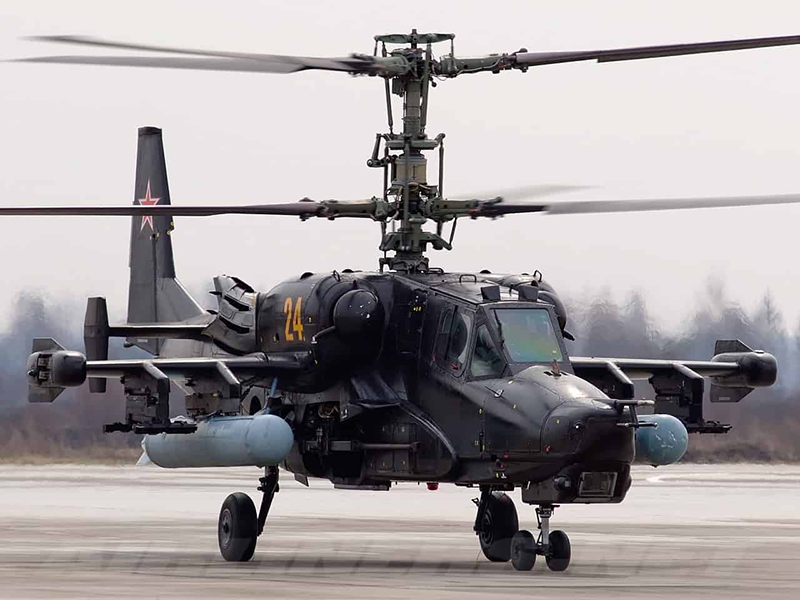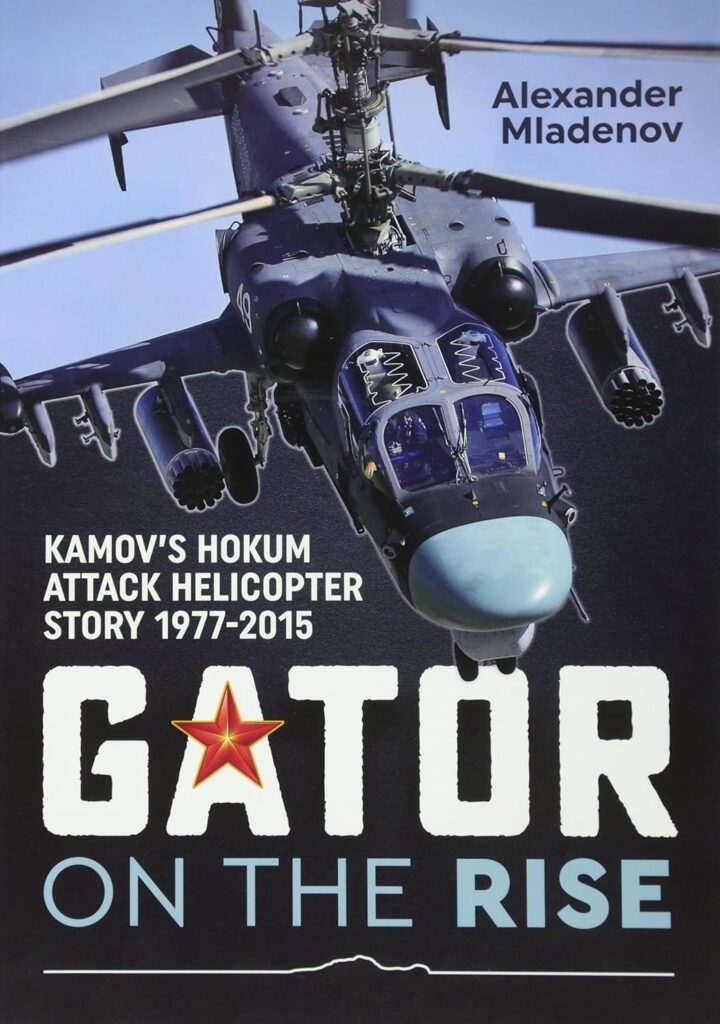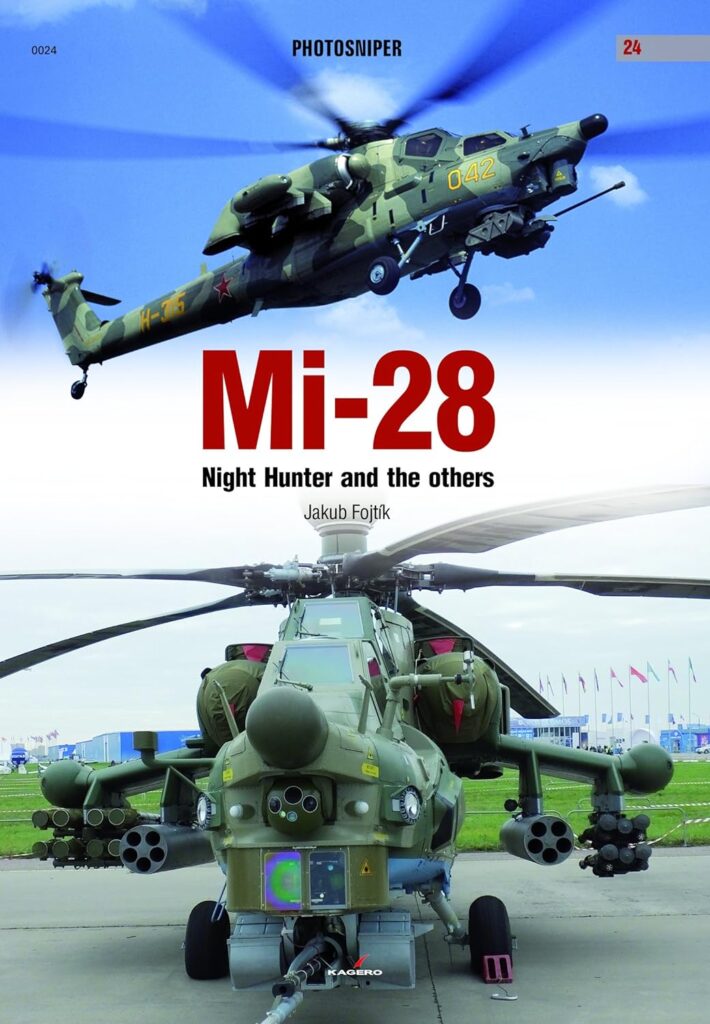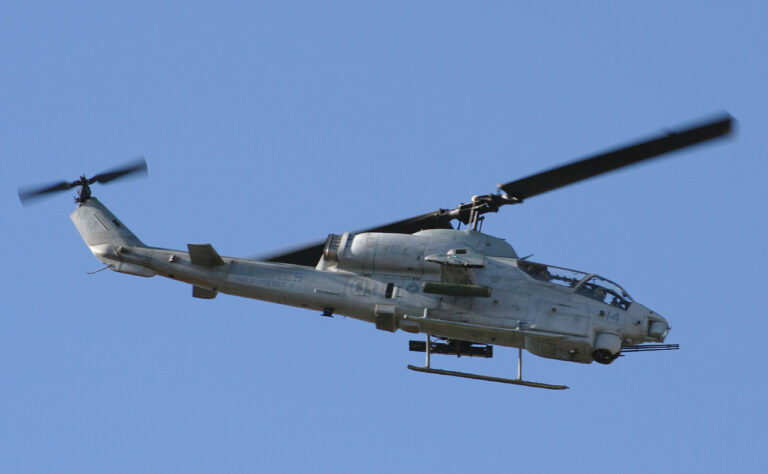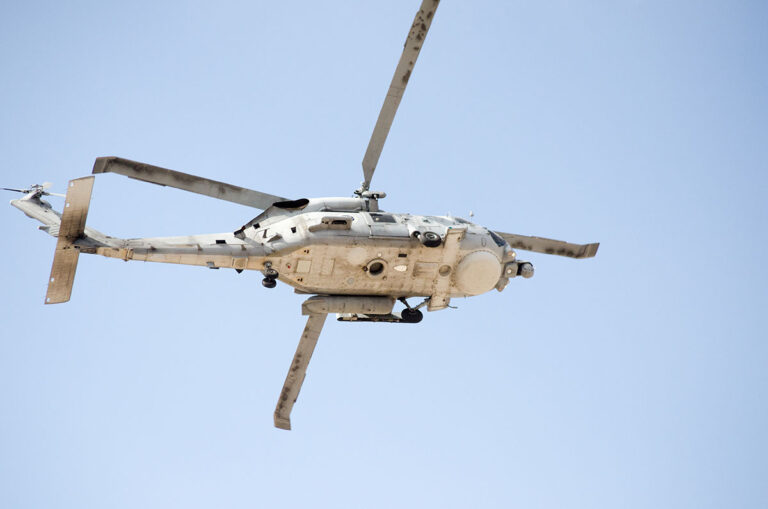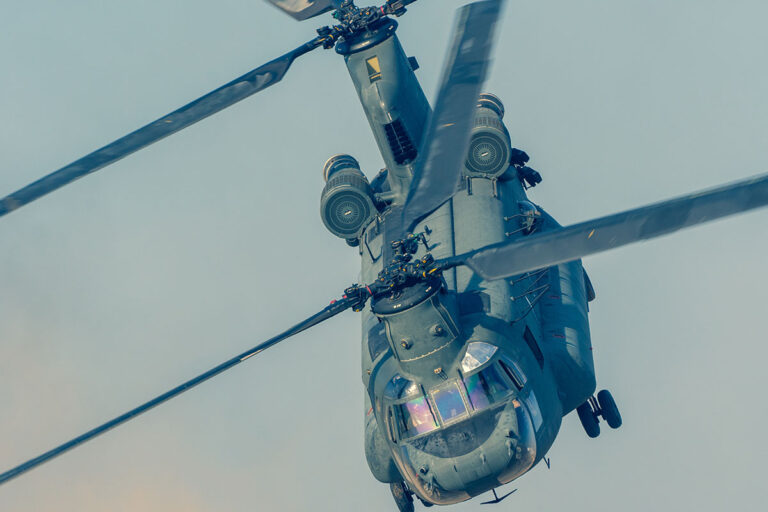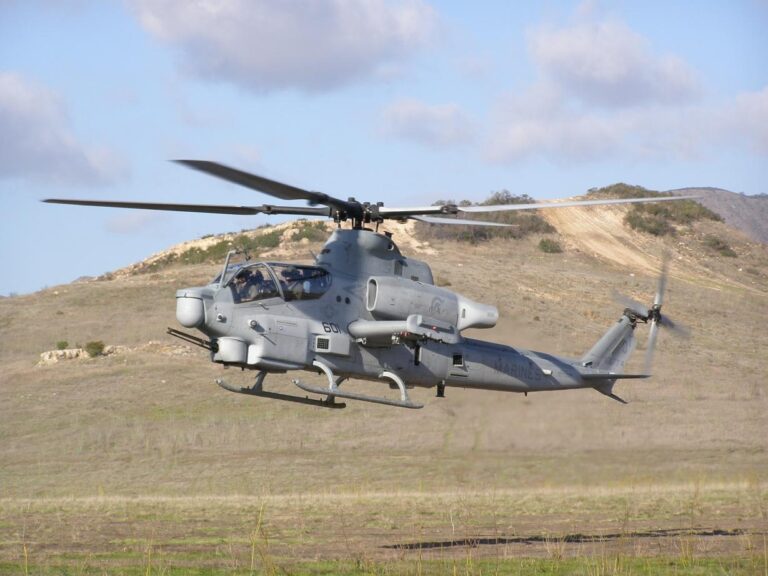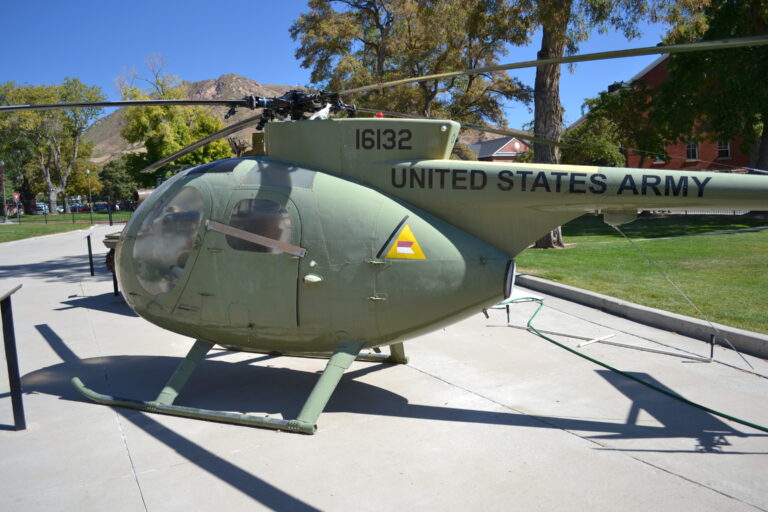The Kamov Ka-50 Odyssey: Russia’s Helicopter Revolution in the Skies
Helicopters have always captured our imagination, but few have left as indelible a mark as the Kamov Ka-50, Russia’s esteemed ‘Black Shark’. In this comprehensive guide, we’ll embark on a captivating journey into the heart of this iconic rotorcraft’s legacy. From its revolutionary design and pioneering technical specifications to its formidable operational tactics and enduring influence on both the battlefield and popular culture. The Kamov Ka-50 stands as a beacon of military aviation excellence. Whether you’re an aviation enthusiast or just curious about this remarkable machine, our deep dive promises to offer insights and revelations about an aircraft that has truly redefined the skies.
Historical Background of the Kamov Ka-50
Diving into the annals of military aviation, the Kamov Ka-50 stands as a beacon of innovation and a testament to Russian engineering. But how did this marvel come to be? Understanding its historical background offers more than just facts; it reveals the narrative of ambition, innovation, and resilience.
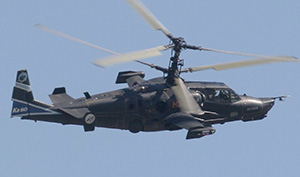
The Inception: The Need for the Kamov Ka-50
As with many engineering feats, the birth of the Kamov Ka-50 was driven by necessity. In the late 1970s, amidst the Cold War’s peak, there was a palpable need for a new generation of attack helicopters. Russian military strategists recognized a gap: their forces needed a helicopter capable of solo combat missions, one resilient enough to withstand enemy fire and versatile enough to perform in varied terrains and conditions.
Design, Development, and Purpose
The Kamov design bureau, already reputed for its pioneering helicopter designs, took on the challenge. The bureau’s emphasis was clear:
- Solo Combat: Unlike other attack helicopters designed for crewed operations, the Kamov Ka-50 was uniquely designed for single-pilot missions. This decision streamlined its operations and reduced vulnerability.
- Coaxial Rotors: The design bureau doubled down on the coaxial rotor system—a signature Kamov feature. This decision not only enhanced the Ka-50’s agility but also improved its speed and altitude capabilities.
- Armor and Survivability: Recognizing the dangers of the modern battlefield, the Kamov Ka-50 was equipped with armored cockpits and redundant systems. This design foresight ensured that even if one system were compromised, the helicopter could continue its mission.
Trials, Triumphs, and Tribulations
The 1980s saw the Kamov Ka-50 undergoing rigorous testing. Like any ambitious project, it faced its share of challenges:
- Initial Hurdles: Early prototypes had to grapple with weight issues and integration of advanced avionics.
- Triumph in Testing: Despite initial hiccups, the Ka-50 proved its mettle in state tests, displaying its robustness, agility, and combat efficiency.
- Operational Induction: By the early 1990s, the Kamov Ka-50 was officially inducted into the Russian Air Force, marking a significant milestone in its journey.
A Glimpse into Notable Missions
While specifics about military missions are often shrouded in secrecy, it is known that the Kamov Ka-50 has been deployed in various conflict zones. Its prowess has been especially noted in mountainous terrains, where its maneuverability and coaxial rotor system give it a distinct advantage.
Wrapping Up: A Legacy in the Making
The Kamov Ka-50, with its storied past, is not just a machine—it is a symbol. A symbol of Russian determination to innovate and excel. As we proceed to explore its technical marvels and operational achievements, it is essential to remember the historical backdrop against which the “Black Shark” took flight.
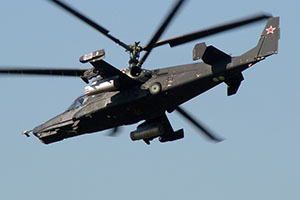
Technical Specifications
Diving into the practical details of any aircraft is like unlocking the secrets behind its prowess. The Kamov Ka-50, often hailed for its combat efficacy, owes much of its repute to its intricate design and superior technical features. Let us unpack these specifications to deeply appreciate the “Black Shark” in all its glory.
Power and Propulsion
Central to the Kamov Ka-50‘s performance is its powerhouse: the engine and propulsion system.
- Engine Type: The Kamov Ka-50 is equipped with two TV3-117VMA turboshaft engines. Each of these engines is known for its reliability and packs a punch, producing a maximum takeoff power of 2,200 shp.
- Top Speed: This attack helicopter can attain a maximum speed of 310 km/h (190 mph), ensuring rapid deployment in combat scenarios.
- Service Ceiling: Demonstrating its ability to operate at high altitudes, the Kamov Ka-50 boasts a service ceiling of 5,500 meters (18,000 feet).
- Range: With a standard fuel tank, it can cover 545 km (339 miles). But with external fuel tanks, its operational range extends impressively to about 1,160 km (720 miles).
Design and Aerodynamics
Beyond its engine, the Kamov Ka-50 stands out because of its unique design features.
- Coaxial Rotors: The hallmark of the Ka-50 is its coaxial rotor system. This not only negates the need for a tail rotor, ensuring the main engines’ full power is used for lift and thrust, but also enhances the aircraft’s agility and stability.
- Compact Size: Designed for solo operations, the Kamov Ka-50’s compact size allows for better maneuverability, especially in confined spaces.
- Armored Cockpit: Keeping pilot safety paramount, the cockpit is armored to withstand hits from projectiles and ensure maximum protection.
Armament and Defense Systems
An attack helicopter is defined by its weaponry, and the Kamov Ka-50 does not disappoint.
- Main Gun: The Shipunov 2A42 30 mm cannon is the primary weapon. With a dual feed, it can seamlessly switch between armor-piercing and high-explosive fragmentation rounds.
- Missiles: The Ka-50 can be equipped with a range of anti-tank guided missiles, like the Vikhr, and air-to-air missiles such as the Igla or R-73, making it a formidable threat to both ground and air targets.
- Countermeasures: Defense is as crucial as offense. The Kamov Ka-50 boasts an array of countermeasures, including flare and chaff dispensers, to elude potential threats.
| Specification | Detail |
| Engine | 2 x TV3-117VMA turboshaft |
| Top Speed | 310 km/h (190 mph) |
| Service Ceiling | 5,500 meters (18,000 feet) |
| Range (standard) | 545 km (339 miles) |
| Main Gun | Shipunov 2A42 30 mm cannon |
| Missiles | Vikhr, Igla, R-73 |
In Conclusion
The technical marvel that is the Kamov Ka-50 is no accident. Each specification, from its engine to its armament, tells a story of meticulous design and engineering prowess. As we continue our journey through the world of the “Black Shark”, it is these details that set the stage for its operational excellence.
Gator On The Rise
The Kamov Ka-50 was developed as a new-generation heavily-armored attack helicopter.The program was launched at the Moscow-based Kamov Experimental Design Bureau in the late 1970s. The concept called for an unorthodox, well-protected, agile and small-size attack machine. It pioneered the Kamov’s trademark co-axial rotor scheme, combined with a highly automated flight/navigation/targeting suite and long-range antitank guided missiles. In the late 1980s – after a protracted head-to-head competition pitted against the Mil Mi-28 – it was judged as being definitely superior to its competitor and was subsequently ordered for serial production.
Kamov Ka-50 vs. Its Contemporaries
When it comes to the world of military aviation, comparisons are inevitable. Aircraft are not just marvels of engineering; they are strategic assets that nations rely upon. The Kamov Ka-50, with its unique features and capabilities, naturally invites comparisons with its contemporaries. Let us delve into how the “Black Shark” squares off against its peers.
Kamov Ka-50 vs. AH-64 Apache
The AH-64 Apache, primarily used by the U.S. Army, is one of the most iconic attack helicopters globally. But how does it match up against our focus helicopter, the Kamov Ka-50?
- Design Philosophy: The most glaring difference is the crew capacity. While the Kamov Ka-50 is designed for solo operations, the Apache requires a crew of two: a pilot and a gunner.
- Rotor System: The Ka-50’s coaxial rotor system grants it impressive agility, a feature the conventional single-rotor design of the Apache cannot quite match.
- Weaponry: Both helicopters are heavily armed, but the Apache has an edge with its integrated fire control system, allowing for more versatile targeting.
Kamov Ka-50 vs. Eurocopter Tiger
The Eurocopter Tiger, a product of European collaboration, is another formidable contender in the attack helicopter category.
- Speed and Altitude: The Kamov Ka-50 has a slight edge in top speed and operates effectively at higher altitudes, thanks to its robust engine and rotor design.
- Avionics: The Eurocopter Tiger boasts advanced avionics with a more integrated electronic warfare system compared to the older models of the Kamov Ka-50.
- Operational Usage: While both helicopters have seen combat, the Tiger has a broader operational footprint in international missions due to its collaborative European roots.
Mi-28. Night Hunter and others (Photosniper)
The Mil Design Bureau, led by Mikhail Leonteyevich Mil, was one of the leading Soviet plants promoting combination of helicopters and firepower. Mil was personally involved in the development of a prewar A-7 autogyro equipped with a machine gun for its own defense and two more for destroying ground targets. However, this type did not reach mass production. But Mil continued thinking about arming the rotorcraft, especially during his practice design of several Bratukhin helicopters, of which some models were intended for artillery spotting and clearly showed that helicopters could play an important role in the army and could be a part of front line units.
Kamov Ka-50 vs. Mi-28 Havoc
Another product of Russian engineering, the Mi-28 Havoc, serves as an interesting point of comparison for the Kamov Ka-50.
- Crew and Design: Much like the Apache, the Mi-28 is designed for a crew of two. This makes it larger and potentially less agile than the nimble Ka-50.
- Armor and Protection: Both Russian helicopters prioritize pilot protection with robust armored cockpits. However, the Mi-28 emphasizes a wider array of electronic countermeasures.
- Operational Role: While both serve as attack helicopters, the Kamov Ka-50 is often seen as more specialized for solo combat missions, whereas the Mi-28 plays a more versatile role in combined arms operations.
| Specification/Model | Kamov Ka-50 | AH-64 Apache | Eurocopter Tiger | Mi-28 Havoc |
| Crew | 1 | 2 | 2 | 2 |
| Top Speed (km/h) | 310 | 293 | 280 | 300 |
| Service Ceiling (m) | 5,500 | 6,400 | 4,000 | 5,600 |
| Main Armament | 2A42 30 mm | 30 mm M230 | 30 mm GIAT | 2A42 30 mm |
Concluding Thoughts
In the grand theater of military aviation, each helicopter plays a unique role, informed by its design philosophy and strategic intent. The Kamov Ka-50 holds its own, carving a niche with its singular focus on solo operations and agility. While comparisons with contemporaries like the Apache, Tiger, and Havoc are inevitable, each has its strengths, dictated by the challenges, and demands they were crafted to address.
Operational Role and Tactics
The dance of an attack helicopter in the theater of warfare is as much a function of its design as it is of its operational tactics. The Kamov Ka-50, often dubbed the “Black Shark”, is not just a marvel of engineering—it is a testament to strategic genius. In this section, we will delve deep into the operational roles and tactics that define the Ka-50’s presence on the battlefield.
Solo Hunter: The Essence of the Kamov Ka-50
At the heart of the Kamov Ka-50‘s operational philosophy is its role as a solo combat machine. Unlike many of its contemporaries, which often operate in pairs or groups, the Ka-50 is designed for individual sorties.
- Lone Wolf Attacks: With its impressive speed and agility, the Ka-50 can swiftly engage targets, minimizing the window for enemy retaliation. This is especially useful in hit-and-run tactics or surgical strikes on high-value targets.
- Deep Penetration Missions: Thanks to its robust range and service ceiling, the Kamov Ka-50 is adept at deep penetration missions, diving deep into enemy territory to neutralize key installations or command structures.
All-Weather, All-Terrain Warrior
The Kamov Ka-50 is not restricted by the whims of Mother Nature. Its design and equipment enable it to operate in diverse conditions.
- Night Operations: Equipped with advanced night-vision systems, the Ka-50 can undertake nocturnal missions, taking advantage of the cover of darkness.
- Mountain Warfare: Its coaxial rotor system ensures stability even in the thin air of mountainous regions, making it an asset in high-altitude warfare.
Tactical Versatility
Beyond its primary role as an attack helicopter, the Kamov Ka-50 is versatile in its tactical applications.
- Reconnaissance: With its advanced avionics, the Ka-50 can double as a reconnaissance platform, gathering crucial intel for ground forces.
- Escort Missions: Protecting larger, more vulnerable aircraft like transport helicopters is another role the Ka-50 can play, leveraging its formidable armament to fend off threats.
- Integrated Warfare: In larger military campaigns, the Kamov Ka-50 can operate in tandem with ground forces, providing close air support and ensuring air superiority in localized zones.
Key Tactics in the Kamov Playbook
- Terrain Masking: Making use of natural landforms like hills and ridges, the Ka-50 can approach targets stealthily, evading radar and sudden ambushes.
- Rapid Response: In scenarios where time is of the essence, the Kamov Ka-50’s speed allows it to be the first responder, neutralizing threats before they escalate.
- Versatile Weaponry: Depending on the mission profile, the Kamov Ka-50 can be armed with a mix of air-to-ground and air-to-air missiles, ensuring it is prepared for varied combat scenarios.
In Conclusion
In the ever-evolving landscape of military strategy, the Kamov Ka-50 stands out as a symbol of tactical brilliance. Its operational roles are not just a testament to its design but a reflection of the strategic foresight that foresaw the need for such a versatile combat machine. As we navigate the vast expanse of military aviation, the “Black Shark” reminds us that in war, as in nature, adaptation is the key to survival.
Modern Upgrades and Variants
While the Kamov Ka-50 made a significant impact upon its introduction, the realm of military aviation is one of constant evolution. To remain relevant and effective, the “Black Shark” has seen a series of modern upgrades and birthed a few variants over the years. Let us navigate through the technological advancements and diversifications of this iconic Russian rotorcraft.
Upgrades to the Original Kamov Ka-50
Over the years, the original Kamov Ka-50 underwent several upgrades, focusing on enhancing its combat efficiency, survivability, and adaptability.
- Advanced Avionics: As warfare became more reliant on electronics, the Ka-50 received upgrades in its radar systems and onboard computers. This facilitated better target acquisition, navigation, and communication.
- Enhanced Weaponry: The original armament was revisited to incorporate more modern missile systems, offering the Ka-50 better range and precision in its strikes.
- Improved Survivability: Given its solo operational role, pilot safety was paramount. The cockpit saw enhancements, providing better armor and ejection capabilities, ensuring the pilot’s survival even under dire circumstances.
- Night Operations: With the introduction of sophisticated night-vision equipment and infrared systems, the Kamov Ka-50 became a more formidable adversary, capable of operating under the veil of night.
Kamov Ka-50 Variants: The Evolutionary Offsprings
While the original “Black Shark” remains a force to be reckoned with, several variants have emerged, each catering to specific operational demands.
Kamov Ka-52 “Alligator”
The Kamov Ka-52 “Alligator” is the most notable variant of the original Ka-50. This two-seater combat helicopter retained much of the Ka-50’s DNA but introduced several key differences:
- Crew: Unlike the solo-operated Ka-50, the Ka-52 accommodates a pilot and a weapons operator, allowing for better multitasking in combat scenarios.
- Reconnaissance Capabilities: With enhanced avionics and radar systems, the “Alligator” is better suited for reconnaissance missions, providing crucial intel to ground forces.
- Diversified Weaponry: The Ka-52 boasts a more varied arsenal, allowing it to engage a broader range of targets effectively.
Kamov Ka-50N and Ka-50Sh
These are specialized variants, catering to night operations:
- Enhanced Vision Systems: Both these models come equipped with advanced night-vision systems and infrared sensors, enabling them to operate effectively in low light conditions.
- Targeting and Navigation: Upgraded avionics in these variants allow for better target acquisition and navigation during night operations.
Modernization in the Pipeline
Rumors and some confirmed reports suggest that further modernizations are underway, focusing on:
- Stealth Capabilities: Efforts to reduce the radar cross-section and infrared signature of the Kamov helicopters, making them harder to detect.
- Integration with UAVs: Given the rise of drone warfare, there’s speculation about the Kamov Ka-50 variants being integrated with UAV systems for better reconnaissance and strike capabilities.
In Summation
The Kamov Ka-50 is not a relic of the past but a continually evolving marvel of military aviation. Its upgrades and variants are a testament to its foundational strength and the vision to keep it at the forefront of aerial warfare. As the landscape of conflict changes, one can expect the “Black Shark” and its offspring to adapt, evolve, and continue making waves in the skies.
The Legacy of the Kamov Ka-50
In the vast annals of military aviation, certain aircraft carve out a niche so deep that their legacy becomes inextricable from the history they have shaped. The Kamov Ka-50, affectionately termed the “Black Shark”, is one such machine. In this segment, we will traverse the illustrious path this formidable helicopter has trodden, painting a vivid picture of its impact, significance, and the indelible mark it has left on aerial warfare.
A Revolution in Rotorcraft Design
The introduction of the Kamov Ka-50 was nothing short of revolutionary. In a landscape dominated by Western designs, the Ka-50 stood out, both in form and function.
- Unique Design: The coaxial rotor system, which eliminates the need for a tail rotor, was a bold design choice. It gave the Kamov Ka-50 unprecedented agility, allowing for maneuvers that were previously thought impossible for helicopters.
- Solo Powerhouse: While most combat helicopters of its time relied on crew collaboration, the Ka-50, built as a solo machine, highlighted the prowess of the lone pilot, fusing man, and machine in perfect harmony.
Triumphs on the Battlefield
The true test of any military machine is its performance in conflict. Repeatedly, the Kamov Ka-50 has proven its mettle.
- Swift Engagements: With its agility and speed, the Ka-50 could rapidly engage targets, changing the dynamics of the battlefield.
- Versatile Roles: From deep penetration strikes to reconnaissance, from night raids to escort missions, the Black Shark displayed unparalleled versatility.
Impact on Future Designs
The Kamov Ka-50‘s design and success laid down a roadmap for future rotorcraft. Its influence is evident in several subsequent designs and upgrades.
- Coaxial Revolution: Post the success of the Ka-50, several designs across the globe started exploring coaxial rotor systems for enhanced maneuverability.
- Emphasis on Pilot Safety: The advanced ejection system and cockpit protection in the Kamov Ka-50 set a new benchmark, making pilot safety paramount in future designs.
Cultural Icon
Beyond the battlefield, the Kamov Ka-50 permeated popular culture. Its distinct silhouette graced:
- Video Games: Popular combat flight simulators and warfare games highlighted the Ka-50, allowing millions to virtually pilot this legend.
- Movies and Documentaries: The Ka-50’s exploits and prowess were subjects of several documentaries. It even made cameo appearances in action-packed movie sequences, solidifying its iconic status.
A Symbol of Russian Might
In geopolitics, military assets often transcend their immediate purpose, becoming symbols of national pride and power. The Kamov Ka-50 is a shining emblem of Russian ingenuity, resilience, and technological prowess.
Concluding Thoughts
The Kamov Ka-50 is not just a helicopter; it is a chronicle of ambition, innovation, and excellence. Its legacy is one of breaking barriers, rewriting rules, and setting gold standards. As we soar into the future, the tales of the “Black Shark” will continue to inspire, reminding us of the perfect blend of human genius and technological marvel.


